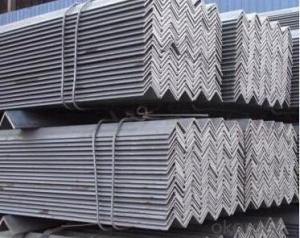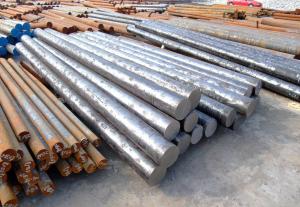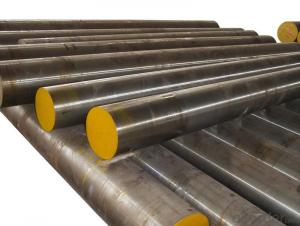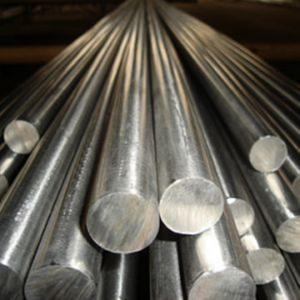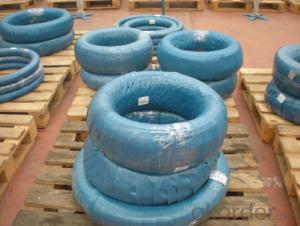Black Hot Rolled Mild Carbon Q235 SS400 A36 Steel Angle Bar
- Loading Port:
- Tianjin
- Payment Terms:
- TT or LC
- Min Order Qty:
- 3 m.t.
- Supply Capability:
- 10000 m.t./month
OKorder Service Pledge
OKorder Financial Service
You Might Also Like
Item specifice
Detailed Information
Name | Equal/Unequal Angle Steel Bar |
Shape | Equal/Unequal Angle |
Standard | GB/ASTM/SAE/AISI/DIN/JIS/EN/BS |
Surface Treatment: | Black/Peeling/Polished/Machined |
Delivery Condition: | Hot Rolled or Forged/Peeled or Black Surface |
Test | SGS/UT 100% Elements Testing |
Certificate: | ISO/Mill Certificate |
Service: | 24 hours online service / |
more than 20 years trading and manufacture | |
Quality Assurance: | the third party inspection, such as SGS, BV, TUV…etc. is acceptable |
Packaging Details: | Seaworthy Packaging or as per customer's packing instruction |
Specification
Name | angle bar |
angle bar standard | AISI, ASTM, BS,DIN,GB,JIS |
angle bar grade | A36, SS400, Q235, Q345, S235,S275 |
angle bar price | 25*3-200*20 |
angle bar length | 6-12m |
angle bar technique | Hot rolled steel angle |
angle bar tolerance | As the standard or as your requirement |
angle bar surface treatment | Galvanized, paint |
angle bar application | Metal structure, bridge, machiner, shipbuilding industry |
angle bar certificated | BV |
angle bar packing details | standard export packing or as your requirement |
angle bar MOQ | 3 tons |
angle bar delivery | Within 25 days after deposit |
angle bar payment | T/T or L/C |
Advantage of angle bar
1.Convenient in construction and save much time and labor
2.High mechanical strength
3.Low price, high quality
Company Introduction
CNBM International Corporation is the most import and export platform of CNBM group(China National Building Material Group Corporation) ,which is a state-owned enterprise, ranked in 270th of Fortune Global 500 in 2015.
With its advantages, CNBM International are mainly concentrate on Cement, Glass, Iron and Steel, Ceramics industries and devotes herself for supplying high quality series of refractories as well as technical consultancies and logistics solution.
Packaging & Delivery
Packaging Detail | Sea worthy packing /as per customer's packing instruction |
Delivery Detail | 15 ~ 40 days after receiving the deposit |
Products Show
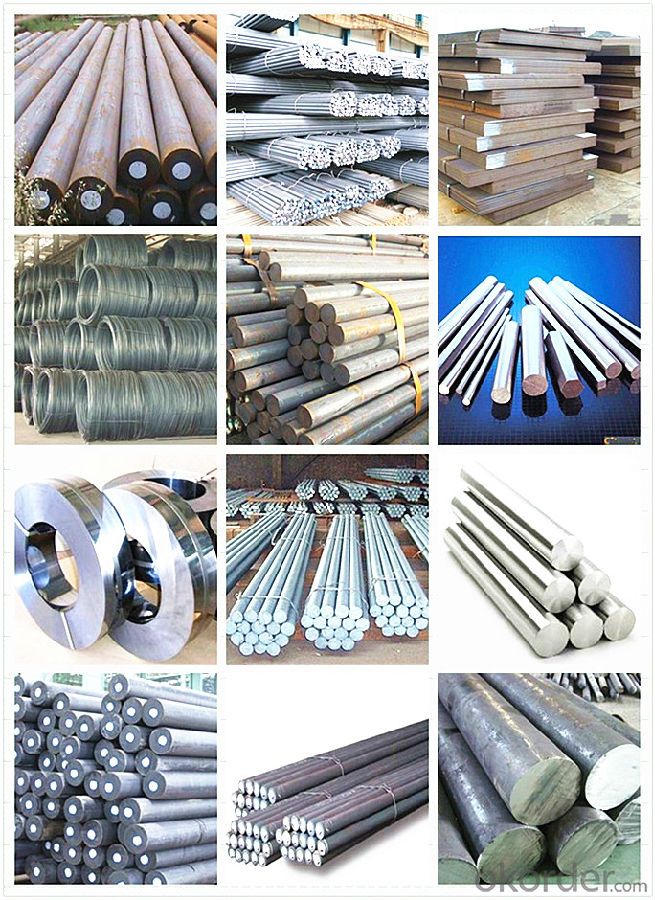
FAQ
Are you a trading company or manufacturer? | Manufacturer |
What’s the MOQ? | 3 metric ton |
What’s your delivery time? | 15-35 days after downpayment received |
Do you Accept OEM service? | Yes |
what’s your delivery terms? | FOB/CFR/CIF |
What's the Payment Terms? | 30% as deposit,70% before shipment by T/T |
Western Union acceptable for small amount. | |
L/C acceptable for large amount. | |
Scrow ,Paybal,Alipay are also ok | |
Why choose us? | Chose happens because of quality, then price, We can give you both. |
Additionally, we can also offer professional products inquiry, products knowledge train (for agents), smooth goods delivery, excellent customer solution proposals. | |
What's your available port of Shipment? | Main Port, China |
What’s your featured services? | Our service formula: good quality+ good price+ good service=customer's trust |
Where are your Market? | Covering more than 160 countries in the world |
- Q:How does quenching and tempering affect the hardness of special steel?
- Quenching and tempering significantly impact the hardness of special steel. Quenching involves rapidly cooling the steel from a high temperature, which results in a hard and brittle structure. On the other hand, tempering involves reheating the quenched steel to a specific temperature and then cooling it slowly, which reduces the brittleness and increases the toughness of the steel while maintaining a desired level of hardness. Overall, this heat treatment process modifies the microstructure of the steel, leading to a controlled increase in hardness while improving its mechanical properties.
- Q:How does special steel perform in medical applications?
- Special steel, also known as stainless steel, has proven to be a highly versatile and reliable material for various medical applications. Its unique properties make it an ideal choice for medical instruments, devices, and equipment. First and foremost, special steel is highly resistant to corrosion, which is crucial in medical settings where sterilization and frequent exposure to moisture are common. This resistance to corrosion ensures that the steel remains durable and does not degrade over time, making it suitable for long-term use. Additionally, special steel is biocompatible, meaning it does not cause any adverse reactions when in contact with living tissues or bodily fluids. This biocompatibility is essential for medical implants such as prosthetics, orthopedic screws, and dental implants, as it minimizes the risk of rejection or infection. Moreover, special steel offers excellent strength and hardness, allowing it to withstand the demanding conditions of medical procedures. It can maintain its structural integrity even under extreme temperatures or high-pressure environments, making it suitable for surgical instruments and cutting tools. Its hardness also enables sharp and precise cutting edges, ensuring accurate and effective surgical procedures. Furthermore, special steel is easy to clean and sterilize due to its smooth surface finish. This is crucial in medical applications where maintaining a sterile environment is of utmost importance to prevent the spread of infections. The smooth surface also prevents the accumulation of bacteria or other contaminants, reducing the risk of contamination. In conclusion, special steel has proven to be a highly reliable and versatile material for medical applications. Its corrosion resistance, biocompatibility, strength, and ease of sterilization make it ideal for medical instruments, devices, and implants. The exceptional performance of special steel in medical applications contributes to improving patient care, ensuring safety, and enhancing the overall effectiveness of medical procedures.
- Q:How does special steel contribute to the durability of products?
- There are several ways in which special steel enhances the durability of products. Initially, special steel's notable qualities of high strength and hardness make it resistant to wear and tear. As a result, products constructed from special steel can endure heavy usage and outlast those made from regular steel or alternative materials. Moreover, special steel commonly incorporates other elements like chromium, nickel, and molybdenum, which heighten its resistance to corrosion. This is particularly crucial for products exposed to harsh environments or chemicals. The corrosion resistance of special steel aids in preventing rust and deterioration, thus increasing the product's lifespan. Additionally, special steel can undergo heat treatment to enhance its mechanical properties, including toughness and hardness. Through specific heating and cooling processes, heat-treated special steel becomes stronger, rendering it less susceptible to deformation and breakage. This is especially advantageous for products subjected to heavy loads or impacts. Furthermore, special steel is often manufactured with precise composition and microstructure, resulting in improved material properties. This encompasses superior fatigue resistance, implying that the material can endure repeated stress without developing cracks or breaking. Consequently, products made from special steel exhibit enhanced reliability and are less prone to failure. In conclusion, special steel significantly contributes to product durability through its high strength, corrosion resistance, improved mechanical properties, and superior fatigue resistance. By incorporating special steel into the manufacturing process, products can be designed to withstand various demanding conditions, ensuring a longer lifespan and greater reliability.
- Q:What are the main characteristics of heat-resistant steel?
- Heat-resistant steel, known as high-temperature steel as well, is an alloy with specific properties that enable it to endure extreme temperatures without sacrificing its mechanical strength and integrity. The primary features of heat-resistant steel are as follows: 1. Thermal fatigue resistance: Heat-resistant steel is designed to endure cyclic heating and cooling without developing cracks or fractures. This characteristic allows it to maintain its structural integrity, even in environments with rapid temperature fluctuations. 2. Exceptional creep resistance: Creep refers to the gradual deformation that occurs in a material when exposed to high temperatures over an extended period. Heat-resistant steel exhibits exceptional resistance to creep, ensuring that it retains its shape and strength even under prolonged heat exposure. 3. Preservation of mechanical properties at elevated temperatures: Unlike regular steel, which experiences a significant reduction in strength and hardness at high temperatures, heat-resistant steel retains its mechanical properties even under extreme conditions. This property makes it suitable for applications in industries such as aerospace, power generation, and oil and gas. 4. Resistance to oxidation and corrosion: Heat-resistant steel possesses a high resistance to oxidation and corrosion at elevated temperatures. It forms a protective oxide layer on its surface, preventing the underlying material from being attacked by oxygen or other corrosive elements. This property enhances the longevity and reliability of components made from heat-resistant steel. 5. Excellent thermal conductivity: Heat-resistant steel exhibits outstanding thermal conductivity, allowing it to efficiently transfer heat away from its surface. This feature proves particularly beneficial in applications where heat dissipation is crucial, such as in heat exchangers and furnace components. 6. Minimal thermal expansion: Heat-resistant steel has a relatively low coefficient of thermal expansion, meaning it expands and contracts minimally when subjected to temperature changes. This characteristic ensures dimensional stability and reduces the risk of warping or distortion under thermal stress. In summary, the main characteristics of heat-resistant steel make it an ideal material for applications that involve exposure to high temperatures, such as furnace components, exhaust systems, gas turbines, and heat exchangers. Its ability to endure extreme heat while maintaining its structural integrity and mechanical properties make it a critical material in industries where temperature resistance is of utmost importance.
- Q:What are the different methods of surface finishing for special steel?
- Some different methods of surface finishing for special steel include electroplating, powder coating, hot-dip galvanizing, and passivation.
- Q:What are the different surface cleaning methods used for special steel?
- There are several surface cleaning methods used for special steel, including mechanical cleaning, chemical cleaning, and electrochemical cleaning. Mechanical cleaning involves the use of abrasive tools or equipment to remove dirt, rust, or other contaminants from the surface. Chemical cleaning involves the use of chemicals, such as acids or solvents, to dissolve or remove contaminants. Electrochemical cleaning utilizes an electrical current to remove contaminants and improve the surface finish. Each method is chosen based on the specific requirements and condition of the special steel being cleaned.
- Q:Are there any international standards for special steel?
- Yes, there are international standards for special steel. These standards are developed and maintained by various organizations such as the International Organization for Standardization (ISO) and the American Society for Testing and Materials (ASTM). These standards ensure that the special steel products meet specific criteria for their composition, properties, and performance, enabling global consistency and compatibility in the industry.
- Q:How does special steel perform in cutting applications?
- Special steel performs exceptionally well in cutting applications. It has high hardness, excellent wear resistance, and superior toughness, allowing it to effectively cut through various materials with ease. Its exceptional performance ensures precise and clean cuts, making it a preferred choice in industries such as manufacturing, construction, and automotive. Additionally, special steel's ability to retain its cutting edge for prolonged periods minimizes the need for frequent sharpening or replacement, resulting in increased productivity and cost-effectiveness.
- Q:What are the different methods of strengthening special steel?
- There are several methods to strengthen special steel, including heat treatment, cold working, alloying, and precipitation hardening. Heat treatment involves heating the steel to a specific temperature and then cooling it rapidly or slowly to alter its microstructure and improve its strength. Cold working involves subjecting the steel to mechanical stress, such as rolling or bending, to increase its strength. Alloying involves adding other elements to the steel to enhance its properties, such as manganese, chromium, or nickel. Precipitation hardening involves a two-step process of solution treatment and aging, where the steel is heated and then cooled to form precipitates that strengthen the material.
- Q:What are the different types of tool and die steel?
- There are several different types of tool and die steel, including high-speed steel, cold work steel, hot work steel, and plastic mold steel.
1. Manufacturer Overview |
|
|---|---|
| Location | |
| Year Established | |
| Annual Output Value | |
| Main Markets | |
| Company Certifications | |
2. Manufacturer Certificates |
|
|---|---|
| a) Certification Name | |
| Range | |
| Reference | |
| Validity Period | |
3. Manufacturer Capability |
|
|---|---|
| a)Trade Capacity | |
| Nearest Port | |
| Export Percentage | |
| No.of Employees in Trade Department | |
| Language Spoken: | |
| b)Factory Information | |
| Factory Size: | |
| No. of Production Lines | |
| Contract Manufacturing | |
| Product Price Range | |
Send your message to us
Black Hot Rolled Mild Carbon Q235 SS400 A36 Steel Angle Bar
- Loading Port:
- Tianjin
- Payment Terms:
- TT or LC
- Min Order Qty:
- 3 m.t.
- Supply Capability:
- 10000 m.t./month
OKorder Service Pledge
OKorder Financial Service
Similar products
New products
Hot products
Related keywords
